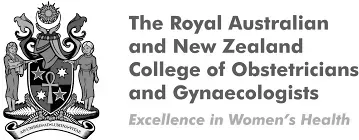Endometriosis
What is Endometriosis?
Endometriosis is a chronic and often painful medical condition where tissue similar to the lining inside the uterus, called the endometrium, grows outside the uterus. This abnormal growth can occur on the ovaries, fallopian tubes, and other areas within the pelvis. It is not cancerous, but it is a condition that can significantly affect a person's quality of life.
Impact of Endometriosis on Anatomy and Health
Endometriosis can lead to several complications related to the reproductive and surrounding systems. Common issues include:
- Painful Periods (Dysmenorrhea): The most common symptom, which can be severe and debilitating.
- Chronic Pelvic Pain: This can occur during menstruation and at other times.
- Infertility: Approximately 30% to 50% of women with endometriosis may experience difficulty conceiving.
- Ovarian Cysts: Endometriosis can cause endometriomas or "chocolate cysts," affecting ovarian function.
- Adhesions/Scar Tissue: This condition can lead to the formation of fibrous scar tissue, which can cause pelvic tissues and organs to stick together.
- Intestinal and Urinary Tract Issues: In some cases, endometrial tissue may grow on the intestines or bladder, causing pain or other symptoms like nausea or urinary urgency.
Risk Factors for Endometriosis
Endometriosis can affect any menstruating woman from the time of her first period to menopause, although it is rarely diagnosed in postmenopausal women. Factors that may increase the risk include:
- Family History: Women with a mother or sister who have endometriosis are at higher risk.
- Menstrual Factors: Longer periods (more than seven days) or a short menstrual cycle (less than 27 days) can increase risk.
- Never Giving Birth: Women who have not given birth may be more susceptible.
- Health History: Conditions that prevent the normal passage of menstrual flow out of the body, such as certain congenital anomalies of the uterus, can increase the likelihood of developing endometriosis.
Causes of Endometriosis
The exact cause of endometriosis is not fully understood, but several theories may explain its development:
- Retrograde Menstruation: This is the most widely accepted theory. It suggests that during menstruation, some menstrual tissue backs up through the fallopian tubes into the pelvic cavity instead of leaving the body. This tissue then implants on the pelvic organs and grows.
- Transformation of Peritoneal Cells: Another theory, known as the "induction theory," proposes that hormones or immune factors promote the transformation of peritoneal cells into endometrial-like cells.
- Embryonic Cell Transformation: Hormones such as oestrogen might transform embryonic cells—cells in the earliest stages of development—into endometrial-like cell implants during puberty.
- Surgical Scar Implantation: Endometrial cells may attach to a surgical incision after surgery, such as a hysterectomy or C-section.
- Immune System Disorder: Issues in the immune system might make the body unable to recognise and destroy endometrial-like tissue growing outside the uterus.
Symptoms of Endometriosis
The symptoms vary widely and do not necessarily indicate the severity of the condition. Common symptoms include:
- Painful Periods: Severe cramps, lower back pain, and pelvic pain that may occur before and during menstruation.
- Pain with Intercourse: Pain during or after sexual activity is common.
- Pain with Bowel Movements or Urination: Often experienced during menstruation.
- Excessive Bleeding: Some may experience heavy periods or bleeding between periods.
- Infertility: Often, endometriosis is first diagnosed in those seeking infertility treatment.
- Other Symptoms: Fatigue, diarrhoea, constipation, bloating, and nausea, especially during menstrual periods.
Prevention of Endometriosis
Currently, there is no sure way to prevent endometriosis, but certain lifestyle choices and medical treatments can help manage risk factors or symptoms:
- Hormonal Treatments: Hormonal contraceptives, such as birth control pills, patches, or vaginal rings, may help prevent the worsening of endometriosis by regulating the periods and reducing the amount of menstrual flow.
- Regular Exercise and Healthy Diet: Regular physical activity and a diet low in red meat and high in fruits, vegetables, and whole grains may help to lower oestrogen levels and reduce risk.
- Avoiding Large Amounts of Alcohol and Caffeine: Both can raise oestrogen levels, so moderation is recommended.
Types of Endometriosis
Endometriosis is categorised into three types based on the location and nature of the endometrial-like tissue growth:
- Superficial Peritoneal Lesion: The most common type involves thin lesions spread widely across the surface.
- Ovarian Endometrioma: Also known as "chocolate cysts," these are cysts filled with dark, degenerated blood that can form on the ovaries.
- Deeply Infiltrating Endometriosis (DIE): This type penetrates more than 5 mm under the peritoneum and can involve the bowels, bladder, and, less commonly, other organs. DIE is often associated with more severe pain and fertility issues.
Stages of Endometriosis
According to the American Society for Reproductive Medicine, the severity of endometriosis is classified into four stages. This staging depends on the location, amount, depth, and size of the endometrial implants:
- Stage I (Minimal): Small lesions or wounds and shallow endometrial implants on the ovary. There may be inflammation in or around the pelvic cavity.
- Stage II (Mild): More and slightly deeper implants than stage I, though limited to a small pelvis area.
- Stage III (Moderate): Deeper implants, small cysts on one or both ovaries and filmy adhesions (abnormal bands of tissue that make organs stick together).
- Stage IV (Severe): This stage involves deep implants, large cysts on one or both ovaries and many dense adhesions. It may also affect other pelvic organs.
Diagnosis of Endometriosis
Diagnosing endometriosis can be challenging, but it generally involves a combination of methods:
- Medical History and Symptoms Review: A detailed discussion about menstrual cycles, symptoms, family history, and previous medical treatments.
- Pelvic Examination: A doctor may manually feel areas in the pelvis for abnormalities, such as cysts on reproductive organs or scars behind the uterus.
- Ultrasound: Both transvaginal and abdominal ultrasound can help visualise cysts associated with endometriosis, though they cannot definitively diagnose the condition. Although the sensitivity of Ultrasound in identifying endometriosis is improving.
- Magnetic Resonance Imaging (MRI): An MRI can provide a detailed view of the organs and help plan surgery by showing the location and size of endometrial implants.
- Laparoscopy (Gold Standard): The definitive method of diagnosis involves a minor surgical procedure where a camera is inserted into the pelvis through a small incision. This allows the doctor to see the pelvic organs and any endometrial implants directly and possibly remove a small tissue sample for testing (biopsy).
Treatment of Endometriosis
Treatment for endometriosis is usually tailored based on the extent of the disease, symptoms, and whether the patient wants to become pregnant. Options include:
- Pain Medication: Nonsteroidal anti-inflammatory drugs (NSAIDs), such as ibuprofen, can help ease painful menstrual cramps.
- Hormonal Therapies: These can help slow the growth of endometrial tissue and prevent new implantation of endometrial tissue. Options include birth control pills, patches, vaginal rings, progesterone injections, and GnRH (gonadotropin-releasing hormone) agonists.
- Conservative Surgery: For those who want to become pregnant or if pain symptoms persist, surgery to remove as much endometriosis as possible while preserving the uterus and ovaries can be considered.
- Hysterectomy: In severe cases, and when other treatments haven't worked, removing the uterus and possibly the ovaries might be recommended. This is generally considered a last resort.
- Assisted Reproductive Technologies: If endometriosis is causing infertility, treatments like in vitro fertilisation (IVF) may be recommended.
Implications of Untreated Endometriosis
Leaving endometriosis untreated can result in several complications, including:
- Chronic Pain: Persistent and potentially worsening pain can affect physical and emotional well-being.
- Infertility: Endometriosis is one of the top causes of infertility in women.
- Ovarian Cysts: Formation of cysts that can rupture, leading to severe pain and internal bleeding.
- Adhesions and Bowel Problems: Scar tissue can cause organs to stick together, leading to significant pain and potentially impacting bowel function.
- Impact on General Health: Chronic illness can lead to a decrease in quality of life, affecting mental health, relationships, and work productivity.
Managing endometriosis effectively with medical intervention can help minimise these risks and improve the quality of life for those affected.



